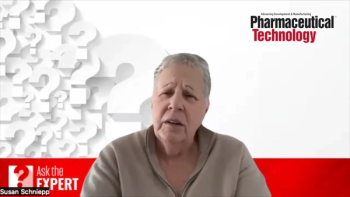
Manufacturers Weigh Strategies to Prevent Drug Shortages
Drug shortages are declining, but they’re still a serious concern for regulatory authorities, policy makers, and bio/pharmaceutical manufacturers.
Drug shortages are declining, but they’re still a serious concern for regulatory authorities, policy makers, and bio/pharmaceutical manufacturers. FDA officials reported that there were less than 40 new drug shortages last year, down from more than 250 in 2011. The agency noted that it was able to prevent nearly 80 short supply situations in 2014, largely due to enhanced communication with manufacturers that helped regulators identify alternative sources and assist firms in addressing supply and production problems.
Limited supplies of crucial medical products, however, continue to plague the United States healthcare system and make headlines when patients can’t access shortages involve crucial, lifesaving medicines, particularly widely used sterile injectables. The Canadian government unveiled new requirements for manufacturers to announce shortage situations, noting that its voluntary disclosure system was not sufficient. GlaxoSmithKline’s recall and resulting shortage in Nicorette lozenges drew cries of outrage from former smokers.
The ongoing drug shortage crisis has generated numerous advisories for how biopharma manufacturers should address the drug quality and production problems that appear to underlie most serious supply situations. The Pew Charitable Trusts recently published a
Risk-based approach
The Pew report further offers strategies for biopharma manufacturers to improve production systems and tighten contracts with suppliers. More specific is a new
The report’s “risk triage model” further considers factors likely to lead to a shortage, such as the strength of established system controls, ingredient sourcing (multiple or single supplier), inventory levels, and process capability. Companies should develop drug shortage prevention and response plans for every product, including the need to seek expedited approval of postmarketing changes that may help avoid shortages over a product’s lifecycle.
For certain high-risk situations, a manufacturer may look to add manufacturing sites or lines, engage additional raw material suppliers, or install new equipment and technology. Manufacturers should identify appropriate inventory levels based on state of controls and the need for multisourcing strategies. And plans should address methods for communicating with health authorities, distribution channels, and users about shortage risks.
Shortage prevention related to high-risk situations may warrant upgrades in aging production facilities and investment in new analytical technologies. The advisors note the value of adopting single-use process technology to replace obsolete equipment, but also recognize that less dramatic upgrades may improve operations, reduce costs, and help avoid process or facility failures. “Enhanced redundancy” may be achieved through approval of an additional manufacturing site or line, as well as added raw material and API suppliers, container/closure components, and dosage forms.
PDA’s technical report is the product of more than two years of deliberations by PDA members through a series of workshops, proposals, and comments. It aims to assist senior management at bio/pharmaceutical companies ensure continued supply of approved medicines and development of a “robust quality culture” to support quality improvement, ensure compliance with manufacturing standards, and foresee and avoid shortage situations.
Newsletter
Stay at the forefront of biopharmaceutical innovation—subscribe to BioPharm International for expert insights on drug development, manufacturing, compliance, and more.




